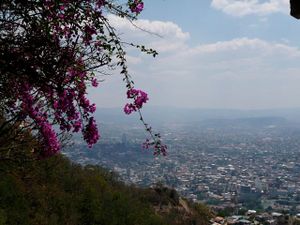Group T - Collaborative Climate Adaption Project
| Area | ' | |
| Place | Amman | |
| Country | Jordan | |
| Topic | ' | |
| Author(s) | Miguel Rasha and Azadeh | |

| ||
|
| ||
Rationale: Why have you selected this case study area?
Back in 1920, Amman was a settlement that started on the edges of a water source RAS AL AIN stream. The lands surrounding the stream were rich with vegetation and trees. RAS AL AIN’s water source started from the current Downtown area, which spread towards the north east of Jordan. The stream aided the first settlers take on farming as means of sustenance. The city slowly expanded from the downtown area towards the hills, and with the expansion, the stream became a dumpsite, and slowly became a hazardous area. As the expansion continued, and the settlement was slowly turning into a city, more and more houses were built over the rich farming soil, instead of expanding the city towards the desert, and turning towards agriculture, and as a result, thousands of trees were cut down, to make way for buildings and streets, disregarding the need for open public spaces, and sustaining the existing vegetation. During the 1960s & the 1970s, Greater Amman Municipality embarked on implementing the first urban plan created for Amman, the capital city of Jordan, where various important decisions were made; the most important being, covering the stream by building a main street over it, and also, cutting down trees from various areas, such as the current site of Jordan University.
During the 1980s, the old quarter of Amman became an area highly congested with traffic, pollution, and demographic density. The area continued expanding, not by means of organized urban planning, but through urban sprawl, which affected the speed through which climate change hit the area even more. Within the past 20 years, the city’s climate changed rapidly, where instead of having four seasons in a year, there are currently only two: summer and winter. Desert storms became an annual event, whereas 30 years ago, it was a rare happening. Lands suffer from desertification and water resources, mainly rainfall levels are decreasing. However, Amman has great potentials in harvesting solar energy, as the area is sunny during ¾ of the year.
Our main focus will be identifying the major problems, realize the major opportunities in order to come up with strategies to improve the current situation, and adapt to or mitigate climate change effects on the city of Amman.
Authors' perspectives
In our point of view, Amman has too much potential to facing the future climate changes. During our research about the city we conclude that Amman is not very adapted at the moment and they need a deep reconfiguration of the city structure and the citizen habits too. There is a huge potential relating to sun energy. The city and the all country is heating exponential and concerning that, it can be a dangerous situation to deal with the global warming but at the same time, can also be a good factor that must be studied deeply. We feel that there is a massive lack of ecological features in the city. The vegetation is poor and in small amounts, the old river Ras al ain is completely buried, the city is growing in the direction of the farmlands and the concrete is getting more and more territory. One of ours concerning about Amman is the current social and economic situation. We believe that must be one of our tools along our study case. How can we take advantage of the climate in Jordan without big investments? How can we improve the energy consume with a lower budget? This topic is very sensible for the city of Amman and therefore it’ll certainly be a part of our work.
Landscape and/or urban context
In this case study, we will address the open spaces and natural landscape of an existing urban context, whereas we would conduct our analysis and basic design principles on the entire scope of the city, and then zoom into smaller pockets within the city, on which we would go into detailed analysis, concepts, and design implementation.
Cultural/social/political context
- Brief explanation of culture, political economy, legal framework
Illustration: Bullet points, image, background notes
Local Climate
- What are the climatic conditions at present? Have there been extreme weather events in the near past?
- Which changes are expected? Is there any evidence?
Illustration: Table or time line
Analysis of vulnerability
- If you consider these potential changes - which aspects/functions of your case study would be affected?
Illustration: Map/diagram/sketches/photos/background notes
Proposals for Climate Change Adaption
- How could your case study area become more resilient to climate change?
- Which measures would need to be taken to adapt to the new situation?
- How could you assure sustainability of these measures?
- Please describe 2-3 measures
Proposals for Climate Change Mitigation
- Which measures would need to be taken to reduce greenhouse gas emissions and other drivers of climate change within your case study area?
- How could you assure sustainability of these measures?
- Please describe 2-3 measures
Your scenario
- How will this area look like in 2060?
- Please forecast one potential future development taking climate change into account
Illustration: Map/diagram/sketches photos and background notes
What can be generalized from this case study?
- Are there any important theoretical insights?
- Which research questions does it generate?
- Short statement plus background notes
Image Gallery
- Yourimage.jpg
your image text
- Yourimage.jpg
your image text
- Yourimage.jpg
your image text
- Yourimage.jpg
your image text
- Yourimage.jpg
your image text
- Yourimage.jpg
your image text
- Yourimage.jpg
your image text
- Yourimage.jpg
your image text
References
Please add literature, documentations and weblinks
About categories: You can add more categories with this tag: "", add your categories